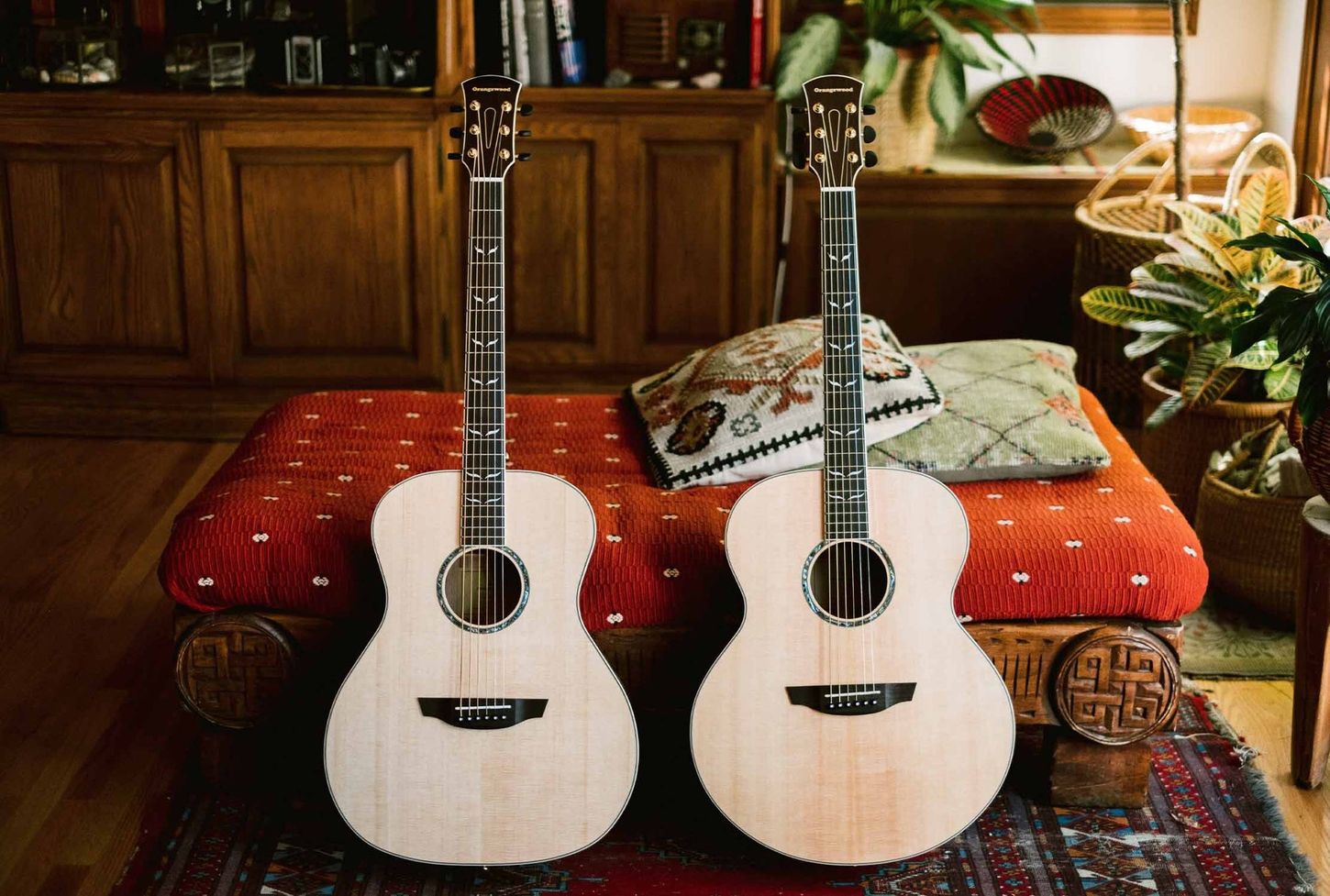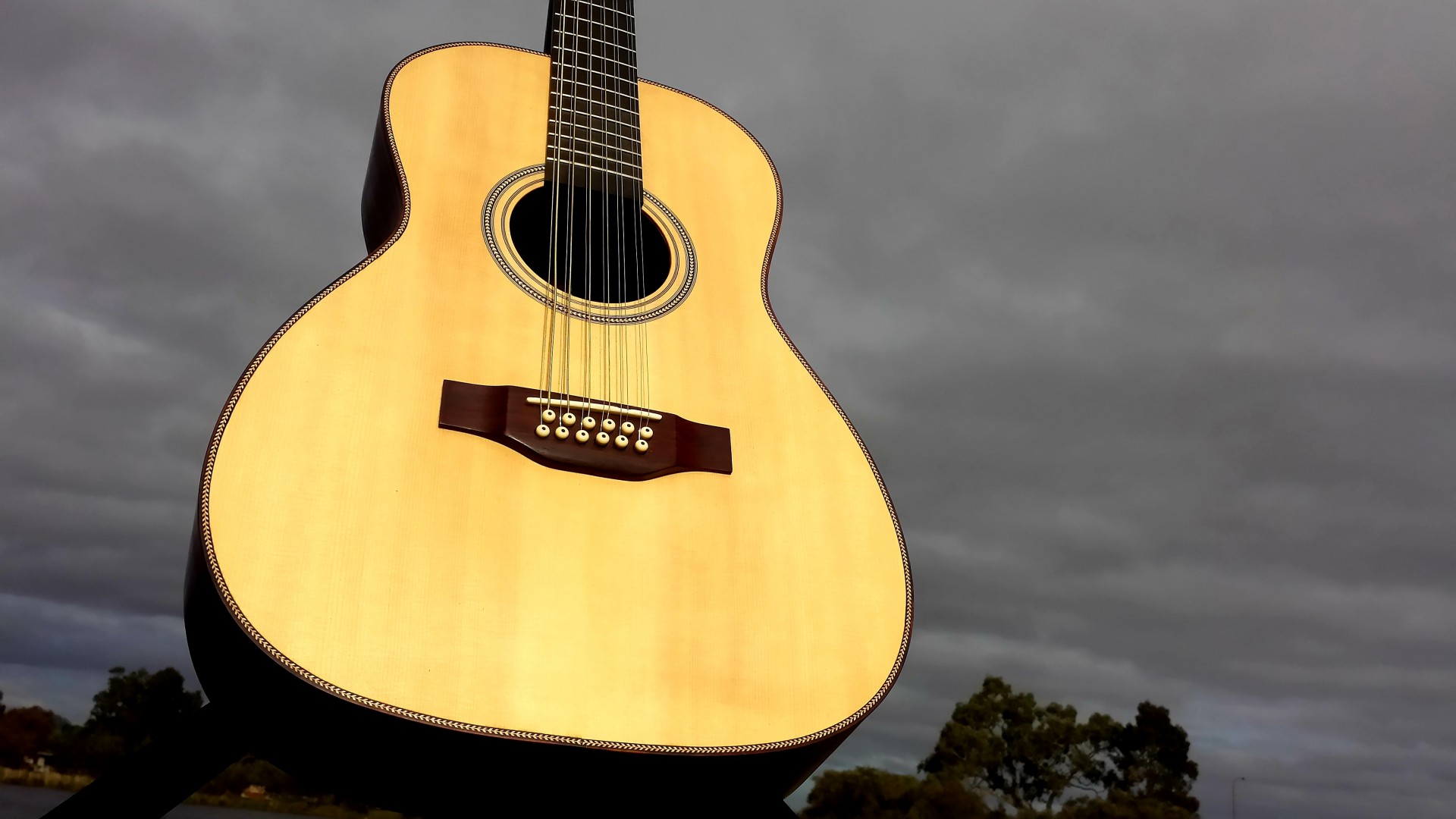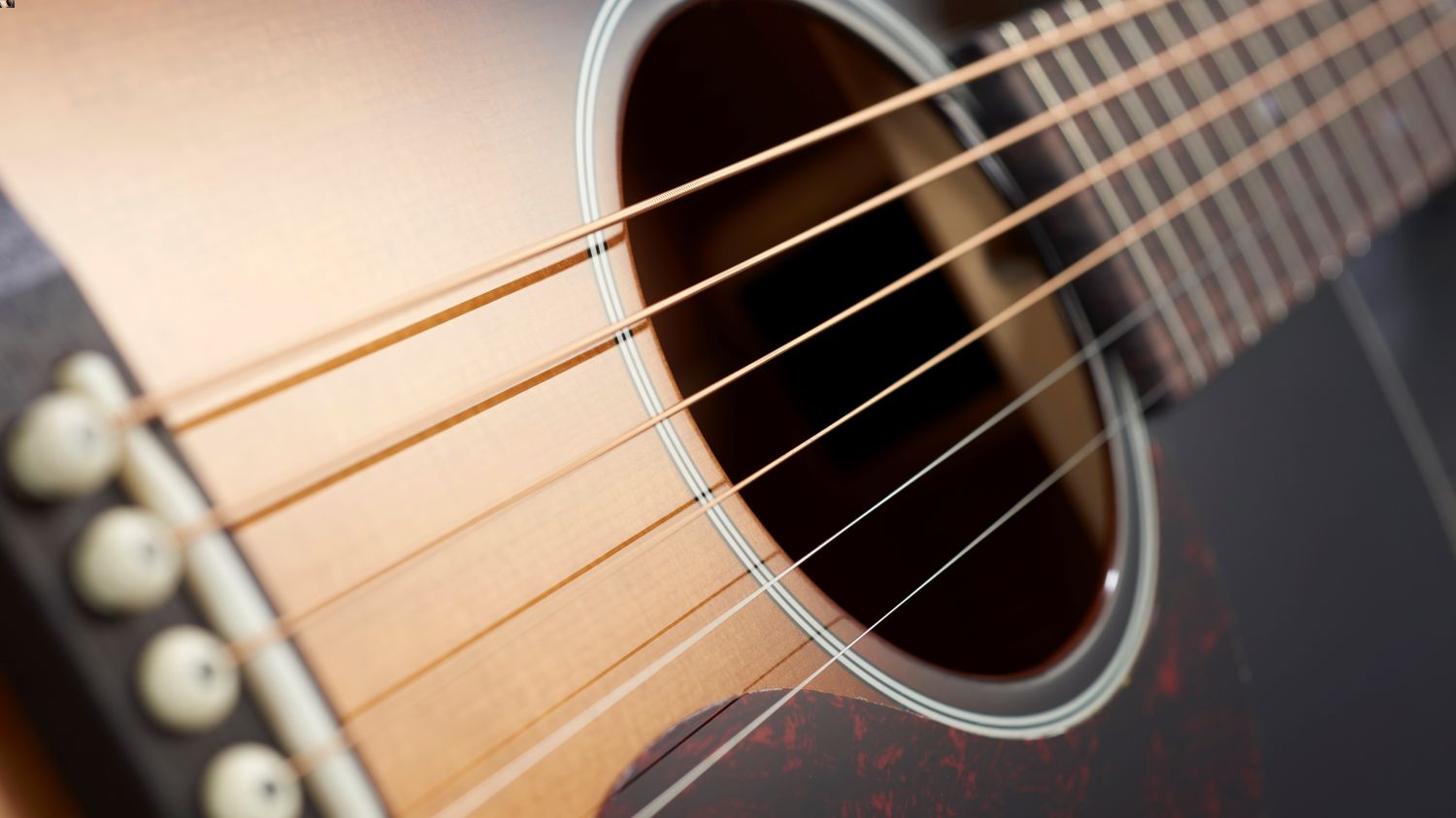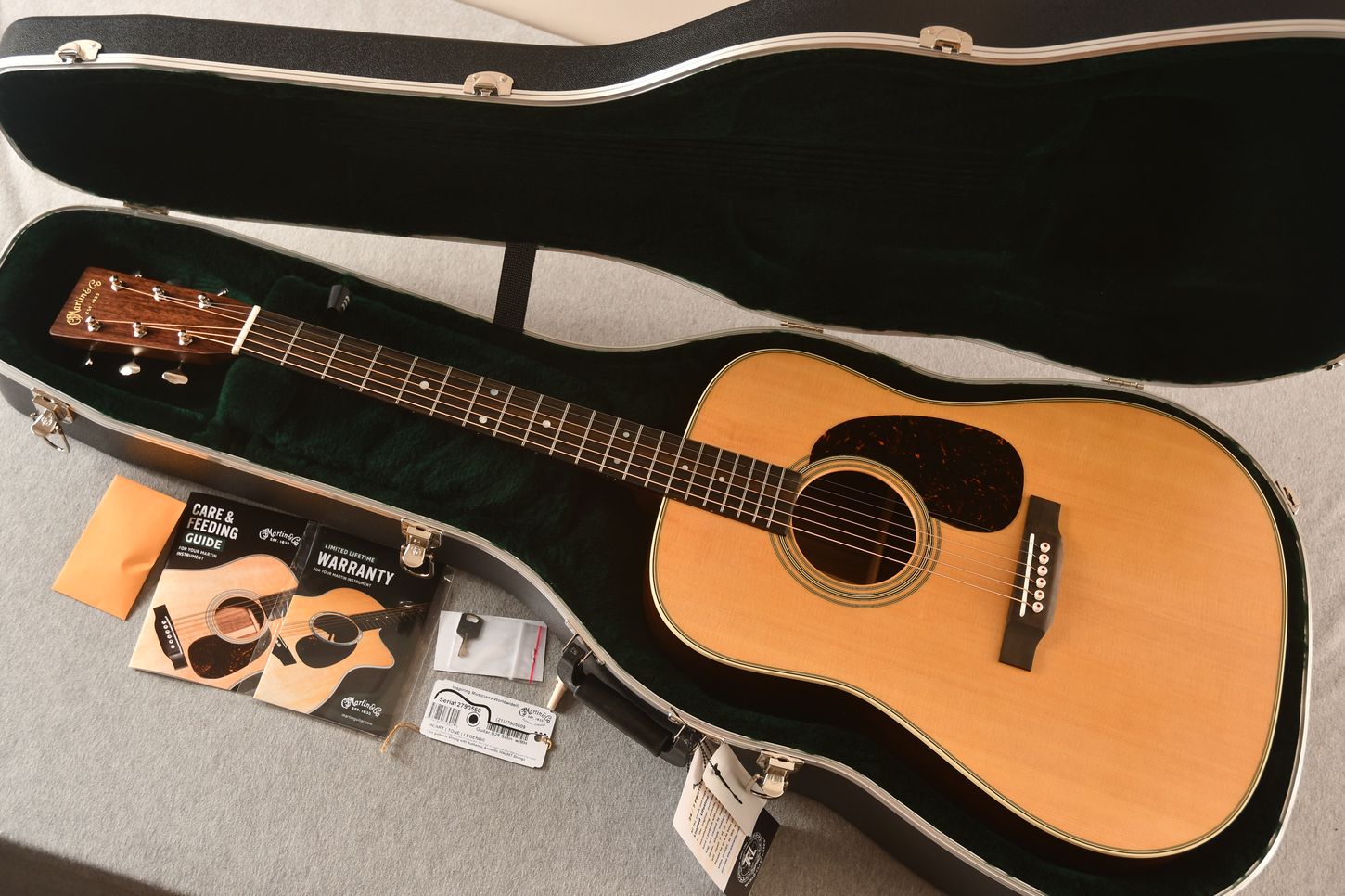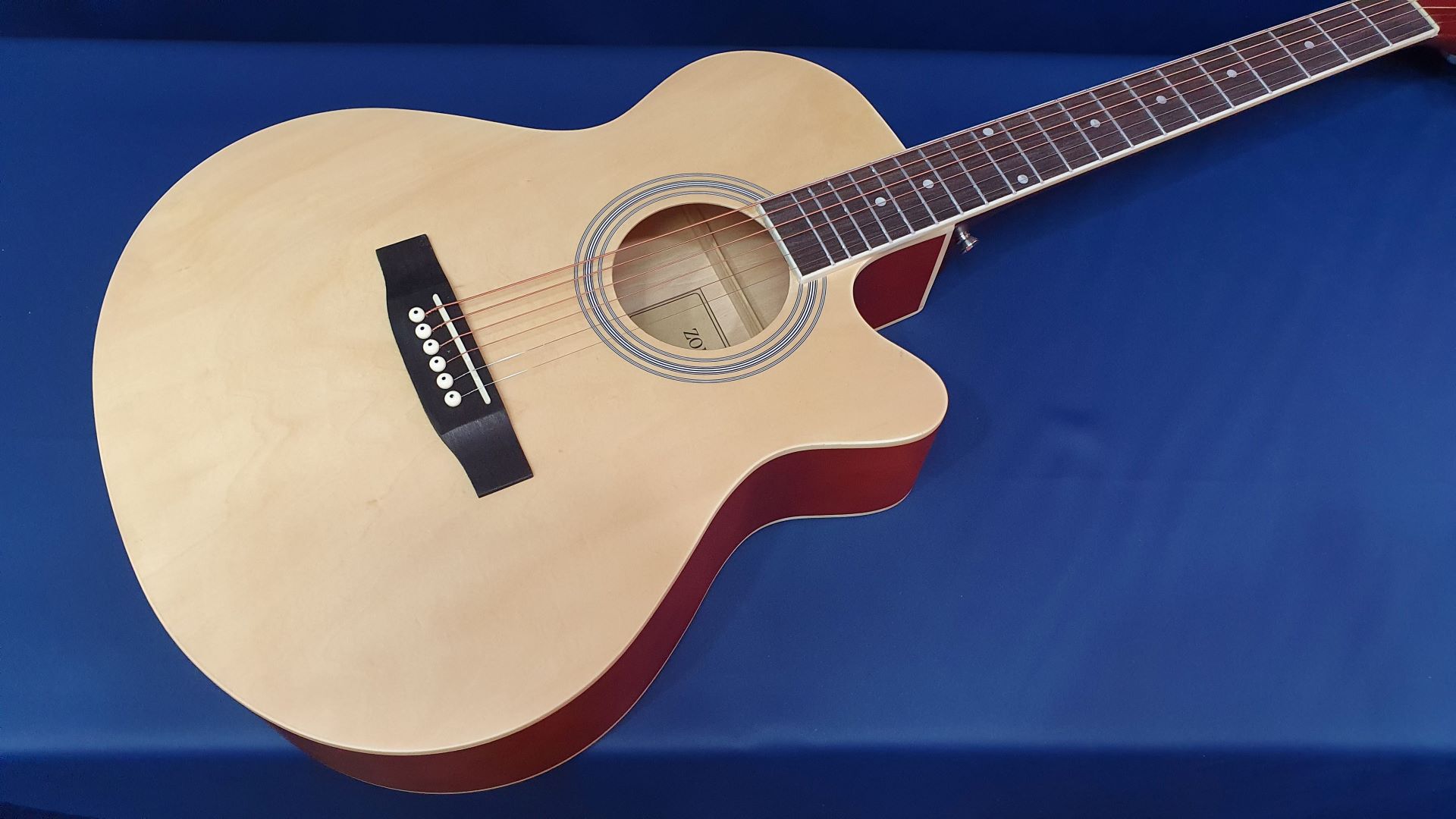Home>Production & Technology>Acoustic>What Is The Best Capo For Acoustic Guitar


Acoustic
What Is The Best Capo For Acoustic Guitar
Published: March 11, 2024
Discover the top capos for acoustic guitars and find the perfect one for your playing style. Explore the best options to enhance your acoustic guitar performance.
(Many of the links in this article redirect to a specific reviewed product. Your purchase of these products through affiliate links helps to generate commission for AudioLover.com, at no extra cost. Learn more)
Table of Contents
Introduction
When it comes to playing the acoustic guitar, there are various accessories that can enhance the sound and playability of the instrument. One such accessory that holds significant importance for guitarists is the capo. A capo is a small device that clamps onto the neck of the guitar, effectively raising the pitch by shortening the playable length of the strings. This simple yet ingenious tool opens up a world of musical possibilities for guitarists, allowing them to easily change the key of a song without having to learn new chord shapes.
The use of a capo is not only limited to altering the pitch of the guitar; it also enables players to explore different tonalities and create unique sounds. Whether you're a beginner learning your favorite songs or a seasoned musician looking to experiment with new arrangements, the right capo can be a game-changer in your musical journey.
In this comprehensive guide, we will delve into the world of capos for acoustic guitars, exploring the different types available, the factors to consider when choosing the best capo, and top recommendations to help you make an informed decision. Whether you're a fingerstyle enthusiast, a strummer, or an aspiring singer-songwriter, understanding the nuances of capos and their impact on your playing can elevate your musical expression to new heights. So, let's embark on this melodic exploration and uncover the best capo options for your acoustic guitar.
Types of Capos
When it comes to capos for acoustic guitars, there are several types available, each with its own unique design and functionality. Understanding the differences between these types can help you make an informed decision when choosing the best capo for your playing style and musical preferences.
-
Spring-Loaded Capos: These capos are equipped with a spring mechanism that allows for quick and easy attachment to the guitar neck. The spring provides consistent pressure, ensuring that the capo stays in place while maintaining proper tension on the strings. Spring-loaded capos are popular among guitarists for their convenience and reliability during live performances and studio recordings.
-
Trigger Capos: Also known as "quick-release" capos, trigger capos feature a lever or trigger-style mechanism that allows for swift attachment and removal from the guitar neck. This design makes it effortless to reposition or remove the capo with one hand, making it a preferred choice for musicians who frequently change capo positions during their performances.
-
Toggle Capos: Toggle capos utilize a toggle-style clamping system to secure the capo onto the guitar neck. This design provides a firm grip while allowing for easy adjustment to accommodate different neck profiles. Toggle capos are favored for their stability and versatility, making them suitable for various acoustic guitar models.
-
Screw Capos: Unlike spring-loaded or trigger capos, screw capos feature a screw mechanism that allows for precise adjustment of the clamping pressure. This level of control enables guitarists to fine-tune the pressure exerted on the strings, ensuring optimal intonation and resonance across the fretboard. Screw capos are valued for their ability to provide a customized fit for different guitar neck shapes and string gauges.
-
Partial Capos: Partial capos, also known as cut capos, cover only a selection of strings, allowing for unique tunings and chord voicings. These capos are favored by experimental and alternative tunings enthusiasts, as they offer unconventional ways to explore harmonic possibilities and create distinctive sounds that deviate from standard guitar arrangements.
Understanding the characteristics and functionalities of these different types of capos can guide you in selecting the most suitable option for your acoustic guitar. Whether you prioritize ease of use, precision, or experimental capabilities, the diverse range of capo types ensures that there's a perfect fit for every guitarist's needs and creative aspirations.
Factors to Consider When Choosing a Capo
When selecting a capo for your acoustic guitar, several essential factors should influence your decision to ensure that the chosen capo aligns with your playing style, musical preferences, and the specific characteristics of your guitar. By carefully considering these factors, you can make an informed choice that enhances your playing experience and musical expression.
1. Material and Build Quality
The material and construction of the capo play a crucial role in its performance and durability. High-quality capos crafted from materials such as stainless steel, aluminum, or zinc alloy offer robustness and longevity, ensuring that the capo withstands the rigors of regular use without compromising its functionality or causing damage to the guitar neck.
2. Fretboard Compatibility
Different acoustic guitars feature varying neck profiles and fretboard radii. It's essential to choose a capo that complements the specific curvature and width of your guitar's fretboard to ensure a secure and even clamping pressure across all strings. Capos with adjustable tension or versatile designs are ideal for accommodating a wide range of fretboard shapes, providing a snug fit without causing fret buzzing or intonation issues.
3. Intonation and Tuning Stability
A well-designed capo should maintain accurate intonation and tuning stability when applied to the guitar neck. Look for capos that exert consistent pressure on the strings, preventing pitch inconsistencies and ensuring that chords and notes ring out with clarity and precision across the fretboard. Additionally, capos with padding or protective elements help safeguard the guitar's finish and minimize the risk of string buzzing or fret wear.
4. Ease of Application and Adjustment
The convenience of attaching, repositioning, and removing the capo is a significant consideration, especially for live performances and practice sessions. Capos with intuitive mechanisms, such as spring-loaded, trigger, or toggle systems, offer swift application and adjustment, allowing for seamless transitions between different fret positions without interrupting the flow of your playing.
5. Versatility and Adaptability
Consider the versatility of the capo in accommodating various playing techniques and musical styles. Whether you prefer fingerstyle picking, strumming, or intricate chord progressions, a versatile capo should facilitate effortless transitions between different fret positions, enabling you to explore diverse tonalities and adapt to the requirements of different songs and genres.
6. Aesthetic Appeal and Ergonomics
While the visual aesthetics of the capo may be subjective, choosing a design that resonates with your personal style and preferences can enhance the overall playing experience. Additionally, ergonomic features such as comfortable grip, lightweight construction, and compact size contribute to the capo's user-friendliness, allowing for extended use without causing hand fatigue or discomfort.
By taking these factors into account, you can navigate the diverse array of capos available in the market and identify the best option that harmonizes with your acoustic guitar, playing techniques, and musical aspirations. Whether you prioritize durability, precision, versatility, or aesthetic appeal, a well-chosen capo can become an indispensable companion in your musical journey, unlocking new creative possibilities and enriching your acoustic guitar performance.
Top Capo Recommendations for Acoustic Guitar
After considering the essential factors and understanding the diverse types of capos available, it's time to explore some top recommendations that stand out for their quality, functionality, and suitability for acoustic guitarists. These capos have garnered acclaim from musicians across various genres and playing styles, making them noteworthy contenders for enhancing your acoustic guitar performance.
-
Kyser Quick-Change Capo: Renowned for its reliability and user-friendly design, the Kyser Quick-Change Capo is a popular choice among guitarists. Featuring a spring-loaded mechanism, this capo allows for swift application and removal, making it ideal for seamless transitions during live performances. Its padded design ensures gentle yet secure clamping, preserving the guitar's intonation and finish. The Kyser Quick-Change Capo's versatility and durability make it a trusted companion for both beginners and seasoned players.
-
Shubb Deluxe S Series Capo: The Shubb Deluxe S Series Capo is celebrated for its precision and ergonomic excellence. Crafted from high-quality materials, including stainless steel and resilient rubber, this capo offers exceptional intonation and tuning stability. Its adjustable tension allows for a customized fit on various fretboard profiles, catering to the specific requirements of different acoustic guitars. The Shubb Deluxe S Series Capo's sleek design and smooth operation make it a favorite among discerning guitarists seeking uncompromising performance.
-
G7th Performance 3 Capo: Engineered with innovation and precision, the G7th Performance 3 Capo stands out for its cutting-edge features and superior functionality. Utilizing a unique Adaptive Radius Technology (ART), this capo adapts to the curvature of the guitar neck, ensuring uniform pressure and impeccable intonation across all strings. Its sleek, low-profile design minimizes interference with playing, making it an excellent choice for both acoustic and electric guitarists. The G7th Performance 3 Capo's advanced technology and premium build quality make it a top-tier option for musicians seeking unparalleled performance.
-
D'Addario NS Artist Capo: Combining versatility and ergonomic design, the D'Addario NS Artist Capo offers a blend of functionality and comfort. Featuring a micrometer tension adjustment and lightweight aluminum construction, this capo provides precise control over clamping pressure while minimizing added weight on the guitar neck. Its sleek, minimalist profile ensures unobtrusive placement, allowing for unrestricted fretting and playing comfort. The D'Addario NS Artist Capo's adaptability and user-centric design make it a standout choice for acoustic guitarists seeking a balance of performance and convenience.
-
Gruv Gear FretWrap String Muters: While not a traditional capo, the Gruv Gear FretWrap String Muters offers a unique solution for achieving controlled string dampening and muting. Ideal for acoustic guitarists exploring percussive techniques and nuanced tonal control, the FretWrap String Muters effectively minimize sympathetic vibrations and unwanted string noise, enhancing clarity and articulation. Its adjustable design allows for tailored string muting, making it a valuable accessory for achieving pristine acoustic guitar recordings and live performances.
Each of these capo recommendations embodies a commitment to quality, functionality, and musical enhancement, catering to the diverse needs and preferences of acoustic guitarists. Whether you prioritize ease of use, precision, adaptability, or innovative features, these top capo options offer a gateway to unlocking new sonic possibilities and elevating your acoustic guitar playing to new heights.
Conclusion
In the realm of acoustic guitar playing, the capo stands as a versatile ally, empowering musicians to explore diverse tonalities, experiment with alternative tunings, and effortlessly transpose songs to suit their vocal range or creative vision. As we conclude this exploration of the best capos for acoustic guitar, it becomes evident that the right capo is not merely a functional accessory but a conduit for artistic expression and sonic innovation.
The journey through the types of capos has unveiled a spectrum of designs, each tailored to meet the specific needs and preferences of guitarists. From the convenience of spring-loaded and trigger capos to the precision of screw and toggle capos, the diverse options cater to a myriad of playing styles and musical genres. Additionally, the inclusion of partial capos has shed light on the potential for unconventional chord voicings and harmonic explorations, offering a glimpse into the boundless creativity that capos can inspire.
Considering the essential factors when choosing a capo has underscored the significance of material quality, fretboard compatibility, intonation stability, and user-friendly design. These considerations serve as guiding principles for guitarists seeking a capo that seamlessly integrates into their playing experience, enhancing both performance and musicality.
Furthermore, the top capo recommendations presented in this guide exemplify the pinnacle of capo craftsmanship, embodying a fusion of innovation, precision, and ergonomic excellence. From the trusted reliability of the Kyser Quick-Change Capo to the cutting-edge technology of the G7th Performance 3 Capo, each recommendation represents a testament to the dedication of manufacturers in elevating the acoustic guitar playing experience.
As guitarists embark on their musical endeavors, whether in intimate acoustic settings or grand stages, the capo remains a steadfast companion, enabling them to navigate the sonic landscape with confidence and creativity. With the right capo in hand, musicians can transcend the limitations of standard tuning, unlock new melodic possibilities, and infuse their performances with a touch of individuality and flair.
In essence, the journey of selecting the best capo for an acoustic guitar transcends the realm of mere gear acquisition; it embodies a quest for sonic identity and expressive freedom. As guitarists embrace the transformative power of the capo, they open themselves to a world of harmonic exploration, melodic innovation, and boundless musical horizons, where every fret becomes a gateway to new sonic dimensions.

